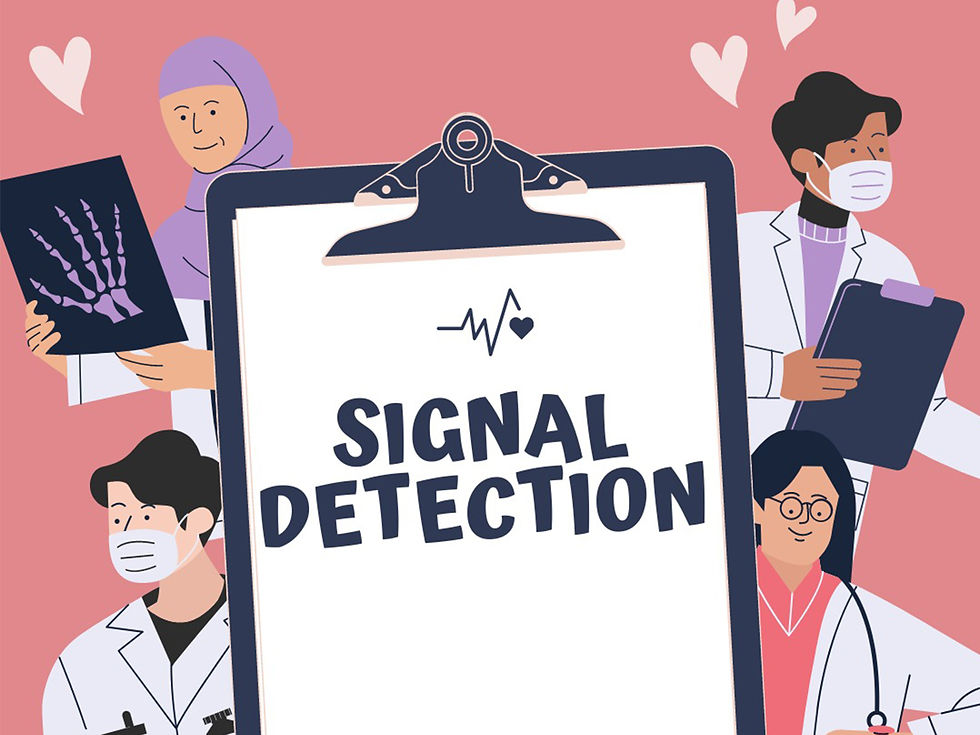How to Enhance Signal Detection in Pharmacovigilance with Literature Monitoring?
- sales293608
- 23 thg 7, 2023
- 3 phút đọc

Introduction:
Pharmacovigilance, the science of monitoring and evaluating the safety of medical products, is a critical aspect of modern healthcare. Ensuring the early detection of adverse drug reactions and safety signals is essential in safeguarding patient health. While adverse event databases and spontaneous reporting systems are valuable sources of safety information, they may not capture all relevant data. This is where literature monitoring for signal detection comes into play. In this blog, we explore how incorporating literature monitoring into pharmacovigilance practices can enhance signal detection, empower healthcare professionals, and ultimately improve patient safety.
1. Comprehensive Data Acquisition: Literature monitoring involves the systematic and continuous search of medical literature, including scientific journals, conference proceedings, and other publications, for relevant safety data. By integrating this approach with existing adverse event databases, pharmacovigilance teams can ensure comprehensive data acquisition, capturing safety signals that may not have been reported through traditional channels.
2. Early Signal Detection: Timely identification of safety signals is crucial in pharmacovigilance. Literature monitoring enables healthcare professionals to detect emerging safety concerns early on, even before they are officially reported to regulatory authorities. By staying ahead of potential risks, healthcare organizations can take proactive measures to mitigate harm and protect patients.
3. Holistic Safety Assessment: Integrating literature monitoring with adverse event data allows for a more holistic safety assessment of medical products. By considering data from diverse sources, pharmacovigilance teams can gain a clearer understanding of the risk-benefit profile of a drug, enabling more informed decision-making.
4. Advantages of Automation: With the vast amount of medical literature published daily, manual monitoring can be overwhelming and time-consuming. However, the use of advanced technology and natural language processing allows for automated literature monitoring. AI-powered algorithms can efficiently sift through large volumes of data, flagging relevant safety information for further review by pharmacovigilance experts.
5. Support for Regulatory Compliance: Regulatory authorities worldwide emphasize the importance of signal detection and evaluation for medical products. By incorporating literature monitoring into their pharmacovigilance practices, pharmaceutical companies can demonstrate their commitment to safety and regulatory compliance. Timely detection and reporting of safety signals not only fulfill regulatory requirements but also reinforce trust in their products.
6. Collaboration and Knowledge Sharing: Literature monitoring encourages collaboration and knowledge sharing among healthcare professionals and researchers. By sharing safety findings through peer-reviewed publications, the medical community can collectively contribute to a deeper understanding of drug safety and foster an environment of continuous learning.
7. Pharmacovigilance in Real-World Settings: While clinical trials provide valuable safety data, they often have limited sample sizes and specific patient populations. Literature monitoring allows for real-world evidence gathering, reflecting the broader patient population and diverse clinical settings. This real-world data complements information obtained from controlled trials, enhancing the overall safety assessment of medical products.
Conclusion: The incorporation of literature monitoring into pharmacovigilance practices is an invaluable approach to enhancing signal detection and improving patient safety. By harnessing the power of technology to automate data acquisition and analysis, healthcare professionals can stay vigilant and proactive in identifying emerging safety signals. The combination of adverse event databases and literature monitoring allows for a comprehensive and holistic safety assessment of medical products. Embracing literature monitoring as a part of pharmacovigilance not only supports regulatory compliance but also fosters collaboration and knowledge sharing in the pursuit of safer and more effective healthcare solutions. Ultimately, it empowers healthcare professionals to make well-informed decisions that prioritize patient well-being in an ever-evolving medical landscape.





Bình luận